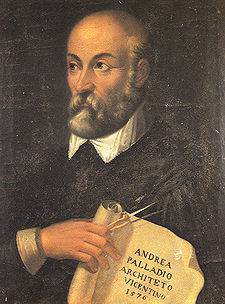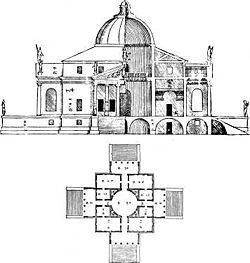
Portrait of Andrea Palladio

Andrea Palladio – Villa Rotonda
Andrea Palladio at the Royal Academy of Arts
The Royal Academy of Arts will be presenting the first exhibition devoted to Andrea Palladio (1508 – 1580) to be held in London for over 30 years; it will celebrate the quincentenary of his birth.
]]>
Palladio was not only one of the greatest Italian architects; he was also a practitionerwhose work has continued to resonate down five centuries. Active in Vicenza, Venice and theVeneto region, he crafted a new architectural language derived from classical sources yet shapedto fulfil the functional demands and aesthetic aspirations of his own age. His impressive oeuvreincludes public buildings and churches; however, it was his town palaces and country villas thatinfluenced subsequent generations of European and American architects. Large-scale models,computer animations, original drawings, books and paintings will present the full range of thisexceptional architect’s output and his legacy, demonstrating why Palladio’s name has beensynonymous with architecture for 500 years.
The exhibition will follow Palladio’s career, from the Basilica, the earlier palaces in Vicenza andhis innovative solutions to rural buildings such as the Villa Poiana and the Villa Barbaro at Maserto his great Venetian churches, culminating with the Villa Rotonda. However, Palladio’s fameand influence rested not only on his executed buildings but also on his Four Books ofArchitecture (1570), in which he illustrated the basic grammar and vocabulary of architecture, hisreconstructions of classical buildings, and his built and un-built projects. His language answeredthe practical and social needs of his time and those of later centuries. The treatise helped tospread his fame, their designs becoming models for new constructions throughout the world.Moreover, the presence of many of his drawings in England (from 1614, when Inigo Jonesbrought them back with him from Vicenza) had a considerable impact on British architecture. Inthe early eighteenth century, the 3rd Earl of Burlington, himself the owner of a very significantnumber of Palladio’s drawings, initiated the Palladian Revival with his remodeling of the 17thcentury Burlington House in the Palladian style.
To present the extent of Palladio’s influence the exhibition will concentrate on a selection ofpertinent examples. These will show how Palladio’s system of architecture was transposed andadapted to countries and contexts far from the Veneto region. The ablest Palladians in fact werethose who best understood that to enrich their own work with Palladio’s ideas meant to extendhis method, adapting it to the needs of their own place and time, rather than building precisefacsimiles of his works. The architects who will be presented here included the two great mastersof the ‘Vicenza School’; Palladio’s jealous Vicentine follower, the brilliant Vincenzo Scamozzi andhis inventive admirer Inigo Jones.
This major exhibition will explore new aspects of Palladio’s work. Drawing upon recentscholarship, it will exploit the survival of a large number of Palladio’s exceptional drawings, and anumber of recently created large scale models of his major buildings. These will becomplemented by specially commissioned computer animations, which will provide a “flythrough” experience of visiting a Palladian building. To contextualise his work, paintings byTitian, Veronese and El Greco will establish his circle of friends and patrons and testify to theclose collaboration between architect and artist during his lifetime, while works by such artists asCanaletto will demonstrate the popularity of his buildings for 18thcentury ‘men of taste’.Palladio has been called the ‘architects’ architect’. As a unique counterpart to this exhibition theRoyal Academy of Arts Architecture Programme is commissioning a selection of contemporaryarchitects to give their personal responses to Palladio in The Architecture Space. Thesearchitects will be challenged to create a narrative which will be presented through interviews,images and documentation. A dynamic dialogue is created between the architectural minds oftoday and their relationship to this architectural heritage.
Follow us on:

